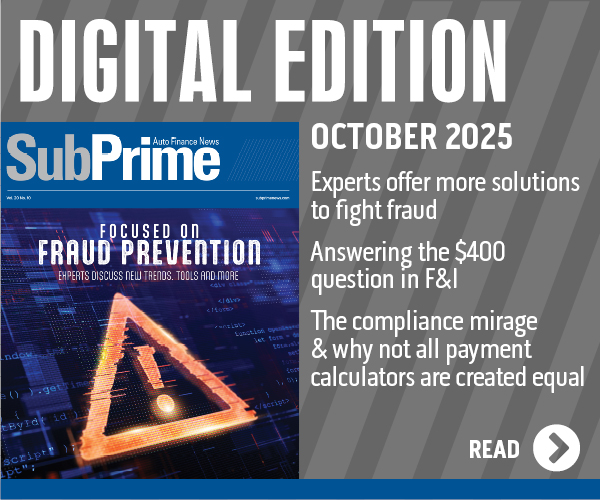DBRS Details Reasons for Strong Auto ABS Market This Year
By subscribing, you agree to receive communications from Auto Remarketing and our partners in accordance with our Privacy Policy. We may share your information with select partners and sponsors who may contact you about their products and services. You may unsubscribe at any time.
NEW YORK — DBRS recently reviewed last year's auto ABS performance and gave reasons why this year's used-vehicle market in particular should remain relatively strong.
DBRS explained that auto ABS was the largest sector by securitization volume in 2010, although volume was still lower than it had been prior to the economic downturn. Firm analysts shared that Credit Suisse estimates auto issuance made up 52 percent of the U.S. ABS market by issuance volume last year. That level is excluding mortgages and collateralized debt obligations.
Both prime and subprime sectors had relatively robust issuance last year, according to DBRS. Analysts believe the reason auto ABS has been the largest sector relates in part due to the relatively stable performance of auto ABS over the past few years.
To be specific, DBRS stressed auto ABS has performed well due to a pair of reasons:
—The underlying performance of the auto loan sector over the past year.
—The strength in auto ABS structures, which are deleveraging and thereby building credit enhancement throughout the life of each deal.
Subscribe to Auto Remarketing to stay informed and stay ahead.
By subscribing, you agree to receive communications from Auto Remarketing and our partners in accordance with our Privacy Policy. We may share your information with select partners and sponsors who may contact you about their products and services. You may unsubscribe at any time.
Looking back over recent history, DBRS pointed out that in both the prime and subprime markets, performance was most negatively impacted by the economic downturn in 2006 through 2008. As a result, analysts reiterated that many originators tightened underwriting standards in 2007 and 2008, which has resulted in better performance in 2009 and 2010.
With those trends in mind, DBRS determined what it thinks are the two key drivers of auto loan performance:
—Changes in weekly jobless claims that impact the frequency of losses.
—Recovery rates that impact the severity of losses.
To illustrate the points, DBRS compared General Motors Financial's liquidated receivables against weekly jobless claims. Firm analysts found a fairly strong relationship between job loss and the finance company's net losses between June 2007 and November 2010.
Beyond those two broad drivers of loan performance, DBRS mentioned a few more that particularly affect subprime borrowers. The firm noted situations such as changes in family status, medical issues and the condition of the vehicle or major expenses associated with the vehicle.
Moreover, DBRS emphasized the severity of losses has been significantly impacted by used-vehicle prices. The firm compared the average recovery rate of prime contracts since 2001 against the Manheim Used Vehicle Index. Both readings dropped to low points in December 2008 but have recovered significantly during the past two years.
Outlook for 2011
DBRS has a positive outlook for the auto ABS sector due to the continued impact of tightening of underwriting criteria by the originators of vehicle financing. DBRS also said it expects the used-vehicle market to remain relatively strong in 2011 for the following reasons:
—Demand for used vehicles is still strong.
—Supply is limited as there are fewer vehicles coming off-lease, less rental fleet coming off-rental and fewer sales of new vehicles over the past few years so there are fewer vehicles available for trade-in.
"DBRS will continue to monitor performance of auto ABS and the factors impacting auto ABS performance," firm analysts concluded.


